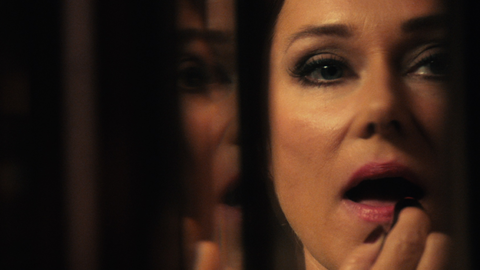By Graham Fuller in the January-February 2010 Issue
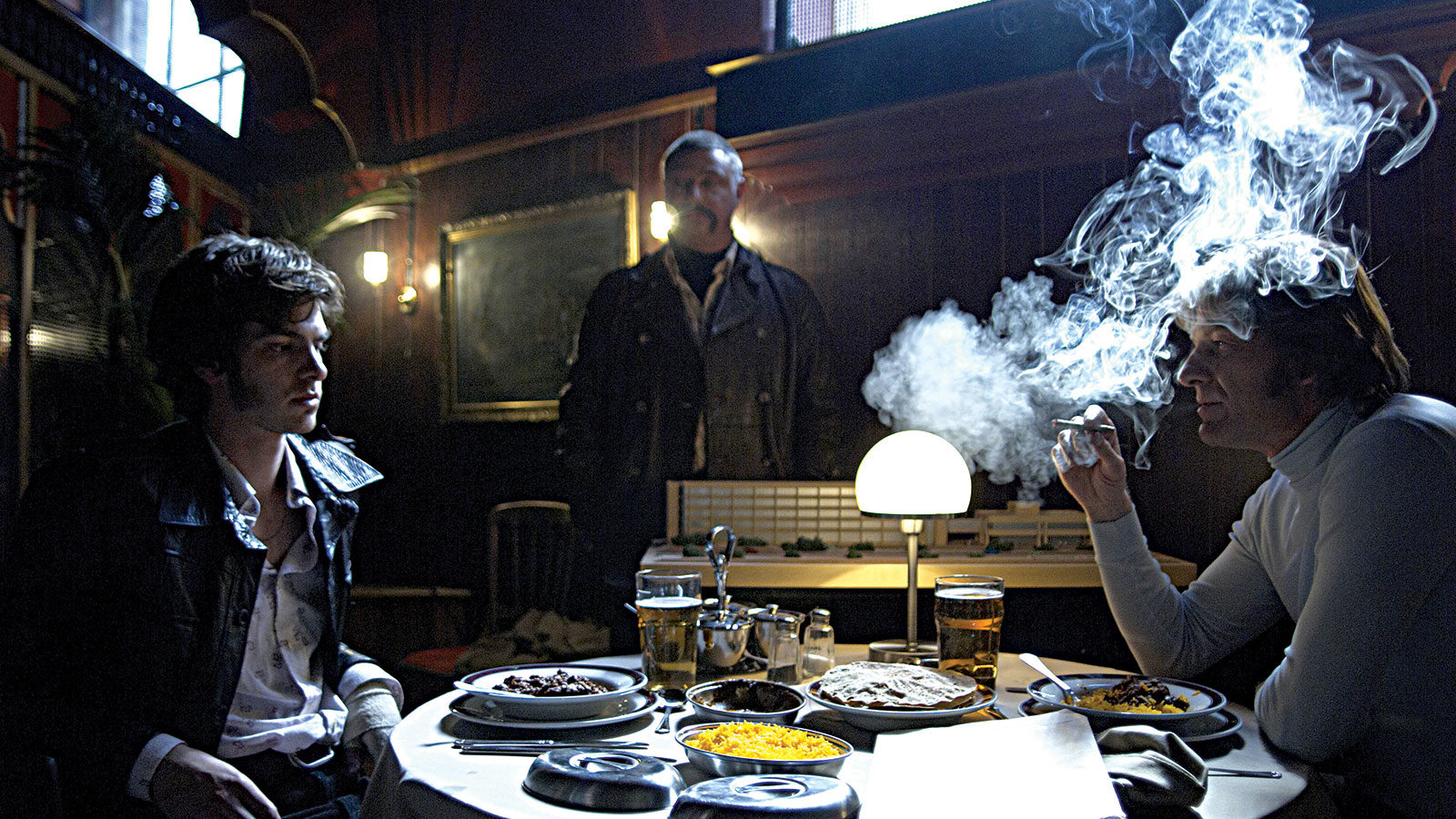
The Bloody North
England’s biggest county yields the dank, kinetic ‘Red Riding’ Trilogy
So you’ll stay away from Fitzwilliam, then?” a newspaper editor warns his young crime reporter in Julian Jarrold’s 1974, whereupon the latter heads straight for that dying mining village with its monstrous cooling towers. There follows the first of a pair of rhyming shots that briefly lyricize urban blight in this part of West Yorkshire. As the reporter, Eddie Dunford (Andrew Garfield), arrives in Fitzwilliam, the camera tracks from left to right past a piece of wasteland in front of some derelict houses: a strange-looking young man hoists an exhaust pipe into the air, kids batter a disused car, other kids and a man with his dog stand around aimlessly. Later, Eddie gets into the convertible driven by the crooked construction king John Dawson (Sean Bean), and this time the camera moves from right to left in the rain as they pass another ruined stretch strewn with abandoned prams and chairs, where Asian immigrant children play nonsensical games. It’s during this second shot that Dawson starts a rant against Britain’s “enemies within”: “Your Paddies, your wogs, your niggers, your fucking gyppos, the poofs, the perverts, even the bloody women. They’re all out to get what they can get. I tell you, soon there’ll be nowt left for us lot.” Anyone who stood in a pub in the miserable Britain of the Seventies would sooner or later have heard variations on this hateful tirade.
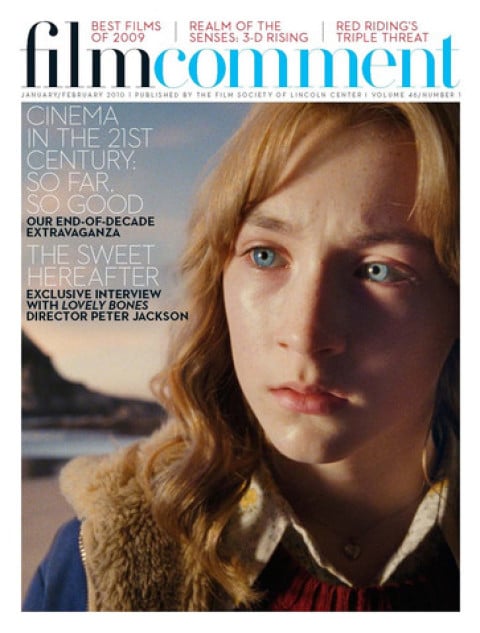
From the January-February 2010 Issue
Also in this issue
Tony Grisoni adapted 1974 from the first novel in David Peace’s “Red Riding Quartet,” named for a Grimm’s fairytale, the color of blood, and the West Riding district of Yorkshire. He also adapted 1977, which wasn’t filmed; 1980, which was directed by James Marsh; and 1983, directed by Anand Tucker. The absence of 1977 doesn’t dilute the overall intensity, but producer Andrew Eaton still hopes to greenlight it once Ridley Scott has completed his American feature adaptation of the entire quartet. It’s been mooted that Scott’s film will be set in a run-down industrial state such as Pennsylvania, but whether the screenwriter, Steve Zaillian, will feel obliged to replicate the fierce regionalism of Peace’s novels, as did Grisoni, is another matter.
It’s not just the godforsaken landscape, the smudged gray skies, and words like “nowt” that identify the trilogy of films as a Northern saga. The spirit of place is located in the people. Wrongly or rightly, Yorkshiremen have a reputation for arrogance, hardness, and chauvinism. Those characteristics amount to a kind of creed, which is visualized in a flashback at the start of 1983. The sequence begins bathetically: to the strains of Marion Newman singing “Eja Mater, fons amoris” from Vivaldi’s setting of the Stabat Mater, a smiling bride running up the steps of a colonnaded building in slow motion throws her bouquet to the waiting women. We see Detective Chief Superintendent Maurice Jobson (David Morrissey), depressed and apprehensive, getting ready for the wedding in front of a mirror. As he and Yorkshire police chiefs and detectives and their wives arrive for the ceremony, seven of the men line up together—like an eyewitness lineup of cops who range from the psychotic to the merely corruptible. One of them quietly tells Jobson that the bride’s father, Chief Superintendent Bill Molloy (Warren Clarke), wants them to meet discreetly upstairs after the dancing.
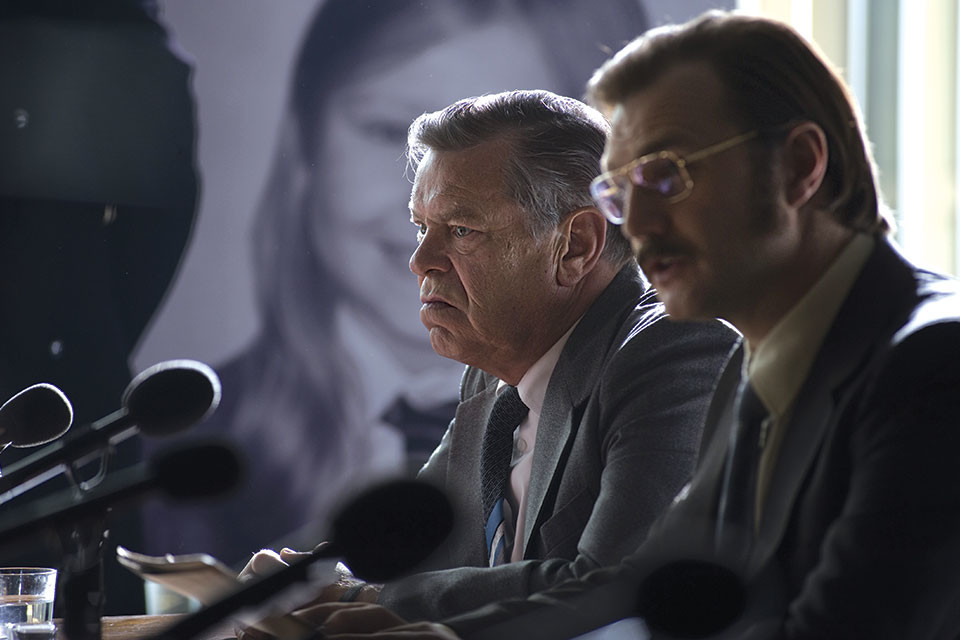
The ensuing scene is set in a darkened room backlit by sun streaming through a window, and the meeting of the cops has the clandestine air of a Masonic gathering; the reluctant Jobson stands back a few feet. The camera roams among the men as Molloy explains in his gravelly voice and flat accent that they are close to achieving their goal of “controlled vice: off the street, out of the shop windows, and into our pockets—the whole of the North of England, the girls, the shops, the mags, the whole bloody lot.” He then leads them in a toast, “To us and to the North . . . to the North, where we do what we want”—the last five words chanted. It is a singular agenda to set at the wedding of one’s daughter, and Molloy’s subsequent introduction of Dawson to the group adds to the irony when Tucker cuts to photos of three abducted little girls, since Dawson was revealed in 1974 to be connected to their disappearances.
It’s in their ability to counter the Yorkshire “creed” that the films’ protagonists succeed or fail morally. “Tainted” by having worked in the South, Eddie Dunford of 1974 goes against his editor, the police, and Dawson in his investigations of the missing girls. In 1980, Peter Hunter (Paddy Considine) is asked to bring in the Yorkshire Ripper (the real-life killer responsible for the murders of 13 women between 1975 and 1980) but is doubly doomed: he’s a “squeaky-clean” assistant chief constable from the hated Manchester force, and he’s also been charged with determining why the Leeds Police’s effort has failed to uncover the killer. In 1983, Jobson recoils from his colleagues’ use of torture and intimidation and agonizes over his own past complicity in perverting the course of justice, while washed-up lawyer John Piggott (Mark Addy) lodges an appeal for a disturbed man framed by the police at the end of 1974 to take the rap for the murder of a little girl, found dead with swan’s wings stitched to her back. Dunford is cocky, slender, and boyish, Piggott passive, fat, and soft-spoken—both radically different types, physically and emotionally, from the films’ brutish cops. Different, too, are the sensitive Hunter and the introspective Jobson, who becomes the trilogy’s existentially tormented conscience. These four men and the haunted rent-boy B.J. (Robert Sheehan) oppose and contradict the Northern hard-man archetype.
The damage done to the female characters in the films amplifies the archetype to the nth degree. Aside from the abducted little girls and the Ripper’s victims, there are a number of women shattered or destroyed by their proximity to twisted, corrupt men. Eddie becomes involved with Paula Garland (Rebecca Hall), mother to one of the abducted girls, and, recalling police photos of the murdered child, imagines her with stitch scars on her back. A needy, mocking femme fatale, Paula seems as much damaged by her sexual involvement with Dawson as by the loss of her daughter and the suicide of her husband. Dawson’s wife in turn has been rendered mentally unstable by their marriage. In 1980, the widow of a cop who pimped out prostitutes and was involved in the porn enterprise is beaten and sexually assaulted. When Hunter brings on a female detective to assist in his investigation, the Yorkshire cops leer at her and make locker-room jokes about Hunter’s having slept with her. One of them can barely contain his laughter when a woman medium (Saskia Reeves) tries to help the police with the inquiries into the abduction of a fourth little girl. To be feminine in Red Riding is to walk in fear of anything from contempt to mutilation.
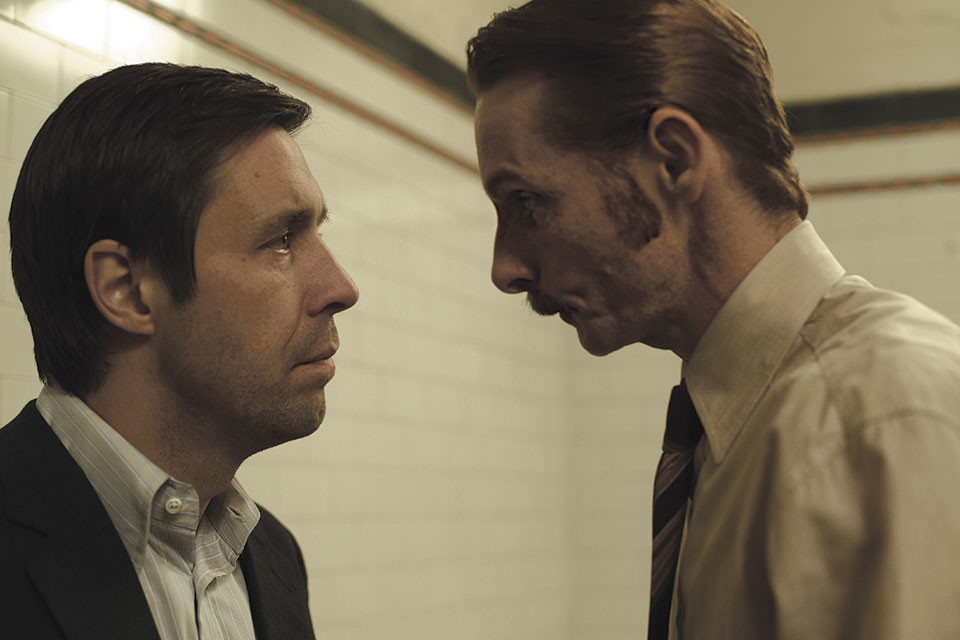
Although each is directed, photographed, and edited by a different team, the three films are consistent stylistically, redolent of such dank, lowering, paranoid noirs as Get Carter and Klute. Jarrold has said he was influenced by the look of such American conspiracy thrillers as The Parallax View, All the President’s Men, and Three Days of the Condor. He often favors extreme close-ups, especially expressive in 1974’s depiction of Eddie’s tortured trysts with Paula. The film can’t match the novel’s hyperkinetic pace when Eddie is propelled into action, but it is the most fatalistic of the three movies: you can sense early on that he will have nowhere to hide. Marsh brings a cold formalism to the police incident room and hotel elevators of 1980. Although the nocturnal sequences are as chilly as those in the films of Michael Mann, the glum-faced Hunter is an empathetic figure doomed by his integrity. Marsh contrives a charming silent 8mm home movie of the detective and his wife visiting relatives over Christmas and enters his imagination when children rise out of tall grass to “shoot” him, but he limits his flourishes; instead, there are moments of great menace. For example, a long shot of Hunter driving between Manchester and Leeds rack-focuses to blades of grass in the foreground; as Peace’s novel reminds us, this is the same stretch of country in which Myra Hindley and Ian Brady, the notorious Moors Murderers, buried their child victims in the early to mid-Sixties.
Bleakly claustrophobic, 1983 takes its visual cues from the guilt felt by Jobson and Piggott, the latter vaguely aware that his late father committed heinous acts and drawn inexorably to the disused mine shaft where they took place. Both men exist in a state of spiritual semi-darkness. The anguished Jobson finds a refuge of sorts in his mistress’s gloomy rooms. Piggott lives apologetically in a murky Fitzwilliam house littered with fast-food containers, but the soul records he plays on his stereo counter the oppressiveness. Piggott’s client Michael Myshkin (Daniel Mays), the young man with the exhaust pipe in 1974, is incarcerated in a psychiatric hospital drained of color. The mood is foreboding: when Jobson and his bloody-minded colleague Dick Alderman (Shaun Dooley) visit Myshkin, Tucker builds tension by going in very close on Alderman’s cigarette, and then on Jobson’s perplexed expression as his colleague follows a cruel line of questioning that causes Myshkin to wet himself.
IFC Films is simultaneously opening Red Riding in theaters and making it available on VOD in the U.S. In Britain, it was broadcast on Channel 4 last year, and though there was a screening at BFI Southbank in London, its identity there is that of a television film. The closest comparison would be with Granada TV’s Prime Suspect series, but Red Riding is more expansively cinematic. That nothing has come along in nearly 40 years to match Get Carter demonstrates the paucity of great British crime films. TV or not TV, the searing, intricately layered Red Riding redresses the balance.



